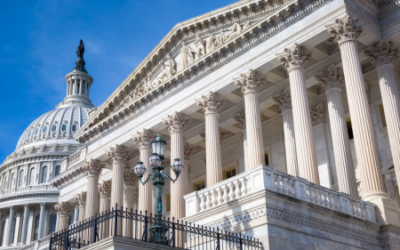Most elected officials, especially at the local levels of government, desperately need more revenue. There are critical needs in their communities but they have no funds to address the problems. Although alternative funding is available, government leaders in many states are reluctant to accept it.
Alternative funding sources are abundant. Funding is available through a multitude of federal programs and there’s an incredible amount of private-sector capital available for investment in public projects.
So, one has to wonder, why are public officials slow to accept the much-needed funding? Why is there so much deferred maintenance in schools, libraries, healthcare clinics and other public facilities when alternative funding is available? Why are unsafe bridges being ignored? Why are transportation projects on hold?
Primarily, it’s because the concept of using alternative funding, especially private-sector capital investment, is not the norm. The model is somewhat complicated and the public at large does not understand how it all works. As a result, the uncertainty of how citizens will view alternatively funded projects and the political risks associated with a new and innovative procurement method stops many elected officials. That’s not only regrettable – it is bad for citizens.
Here’s what is simple – public assets that are ignored grow more costly, inefficient and unsafe every year. Economic vitality, job creation, public safety and sustainability in every region depend on good leadership. Sometimes good leadership requires having the courage and confidence to champion new and innovative initiatives to preserve public assets.

Fortunately, alternative funding is available and it has many faces. The newly created Opportunity Zones incentivize private investment in public projects. The federal program that authorizes the regional designations was created to generate funding for public projects in underserved areas. Public officials serving in certain Opportunity Zones should be aggressively pursuing investors seeking tax exempt investment returns. The program is working in many parts of the country and many government leaders see the funding as an answered prayer for projects related to water resources, transportation and healthcare.
Very similar to the Opportunity Zone program is the New Market Tax Credit program. Tax credits are available to private-sector investors who collaborate on projects in economically distressed areas. This program allows tax credits for investments in either a public- or private-sector project. Justification for allowing the tax benefit is related to job creation. There must be proof of job creation before tax credits are allowed. According to the New Markets Tax Credit Coalition, between 2003 and 2015 (the last year for which data was available) the program has been responsible for generating more than 1 million jobs in the U.S.
Tax-exempt financing, often referred to as 63-20 funding, is also available. This funding source is more common and it allows public officials to create a nonprofit vehicle to authorize tax exempt bonds for facility projects on behalf of a state, county or city.
Other funding options include:
- EB5 program revenue that is available in regional offices throughout the country. This program provides private-sector capital for large public projects that create new jobs.
- Many large investment firms have created industry-related investment funds. This funding is available from investors interested in supporting certain types of public-sector projects. For example, the funds are available for public projects related to water resources, transportation, power, etc.
- Many states have created infrastructure banks that loan money to public entities at low rates for large projects. And, in other states, community banks are investing in public projects through developers.
- Public retirement trust funds and union pension programs are both investing in public projects. There are other sources of funding, but the point is this – there is an abundance of available funding for critical projects in any region.
In spite of this, in the end, it still comes down to public officials who are willing to lead in new ways to procure and deliver projects. Perhaps the country would move forward faster if public officials felt more support from citizens and taxpayers who understand the cost of continuing to ignore critical needs. Or, perhaps public officials need more private-sector contractors helping them access alternative funding.
Strategic Partnerships, Inc. is one of the leading procurement consulting companies in the U.S. Contact them today to learn how to increase your public sector sales.






